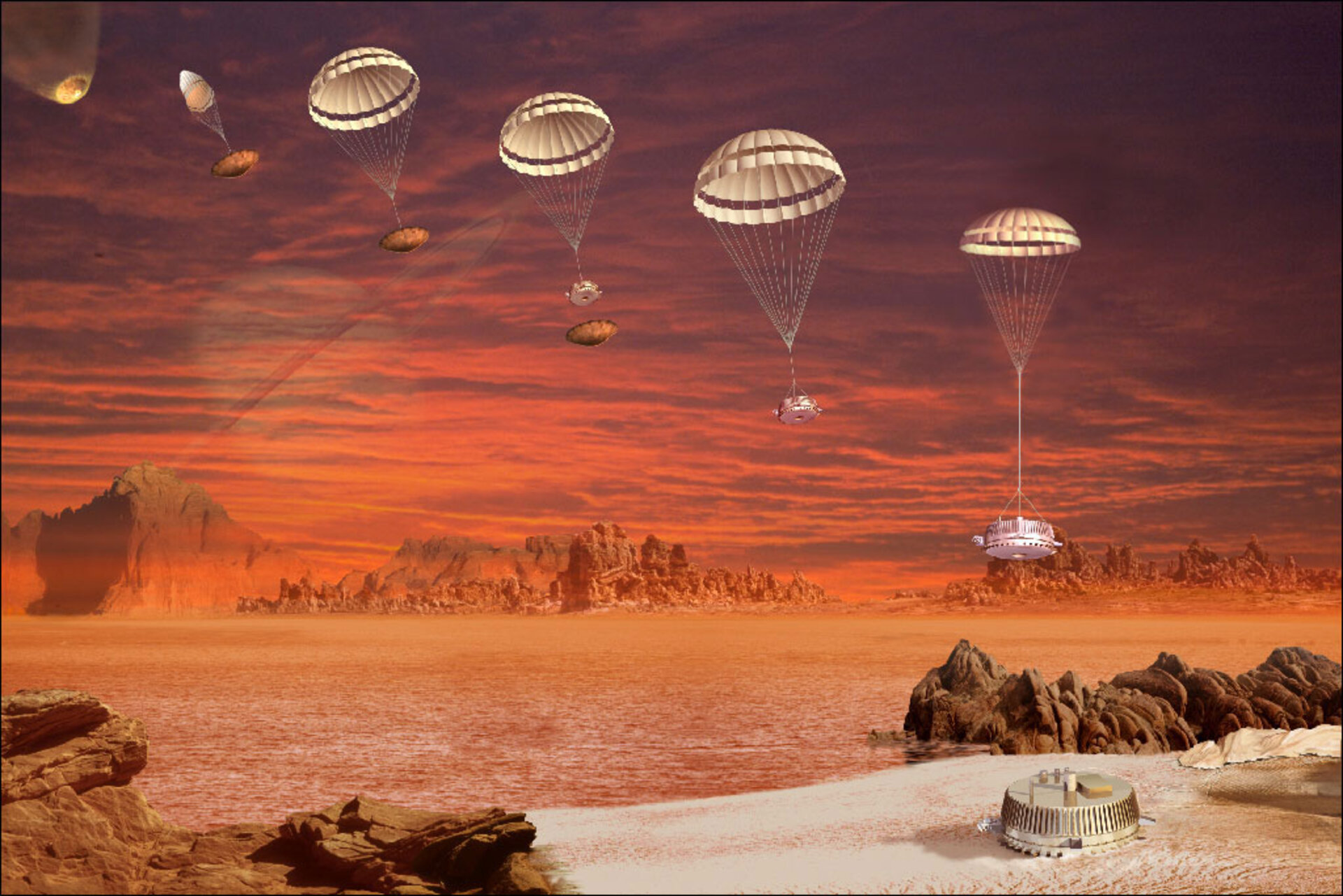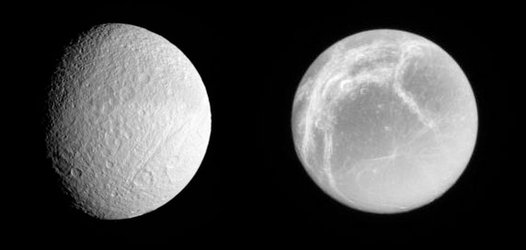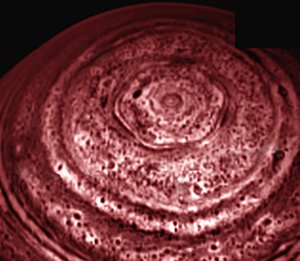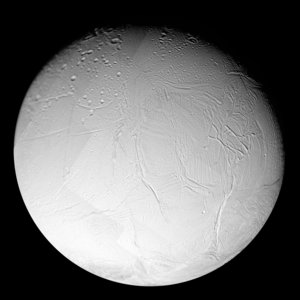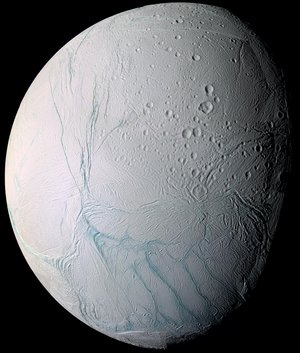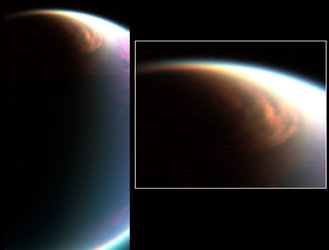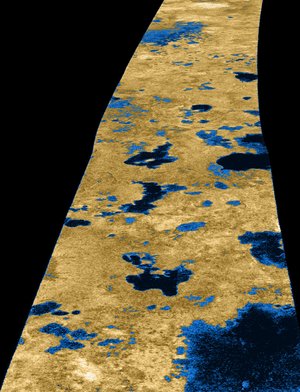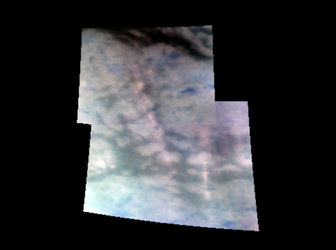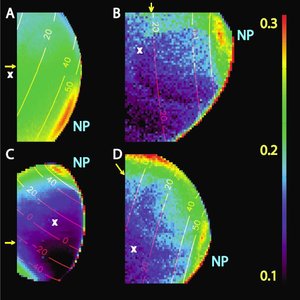Fasten your seat belts, turbulence ahead - lessons from Titan
Ever spilled your drink on an airline due to turbulence? Researchers on both sides of the Atlantic are finding new ways to understand the phenomenon - both on Earth and on Titan.
Turbulence plays an important role in Earth’s weather system, and can be more than an inconvenience - hundreds of injuries have occurred on commercial flights due to turbulence. It is studied both in Earth's atmosphere and in that of Saturn's moon, Titan, aided by data from ESA’s Huygens probe. The study of one is helping the other.
Giles Harrison, atmospheric physicist at the University of Reading in the UK, devised an inexpensive way to measure the effects of turbulence using weather balloons. The instrument package contains a magnetic field sensor which measures fluctuations in Earth’s magnetic field due to turbulence. As Earth's magnetic field is very stable, the measurements of magnetic changes taken with the weather balloon showed the effects of turbulence on the sensor, since the balloon itself was moving very violently.
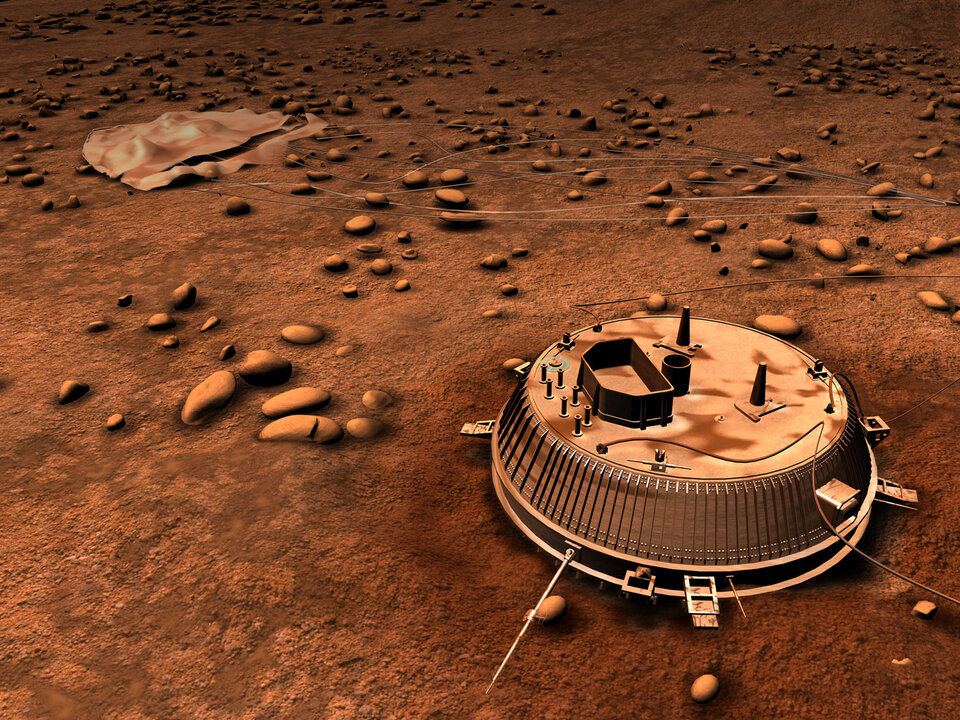
All bodies, planets and moons, are subject to the same principles of physics. So by working together, researchers looking at Earth and those looking at our planetary neighbours can really test their models of the processes taking place and gain new insights into both.
Planetary scientist Ralph Lorenz, at the Johns Hopkins University Applied Physics Laboratory in the USA, found Harrison's results key to making sense of data from Huygens, which descended by parachute through Titan's atmosphere in January 2005.
The Surface Science Package (SSP) on board Huygens included a set of tilt sensors which measured motions of the probe during its descent. These tilt sensors act much like a drink in a glass, using a small slug of liquid to measure the tilt angle.
As the probe plummeted under the parachute through Titan’s atmosphere, there was a lot of buffeting, even though the air itself was fairly still. Knowing the signature of cloud-induced turbulence in Harrison's balloon data from Earth inspired Lorenz to look for a similar effect in the Huygens data using the tilt sensor.
“Huygens’ tilt history was just this long, squiggly, complex mess, but seeing the fingerprint of cloud turbulence in Harrison's work showed me what to look for,” said Lorenz.
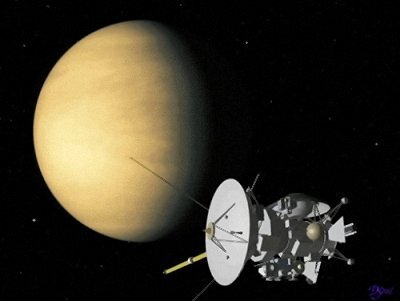
Armed with that information, Lorenz found that a 20-minute period of Huygens' 2.5-hour descent, around an altitude of 20 km, was affected by this kind of in-cloud turbulence. Having experimented with instrumentation on small models, even frisbees, to understand the dynamics of aerospace vehicles like the probe, Lorenz was familiar with the sensors used by Harrison.
Lorenz’s analysis helped identify a turbulent cloud layer in Titan’s atmosphere - a significant result for the investigation of Titan’s meteorology. In the process, he also found a way to improve Harrison's magnetic sensor arrangement on the weather balloon, simply by changing its orientation.
Mark Leese, Project Manager for the SSP on Huygens at The Open University said “We knew Huygens had a bumpy ride down to Titan’s surface. Now we can separate out twenty minutes of air turbulence – probably due to a cloud layer - from other effects such as cross winds or air buffeting due to the irregular shape of the probe.”
Notes for editors:
Lorenz's analysis ‘Descent motions of the Huygens probe as measured by the Surface Science Package (SSP): turbulent evidence for a cloud layer’, by R. Lorenz, J. Zarnecki, M. Towner, M. Leese, A. Ball, B. Hathi, A. Hagermann and N. Ghafoor, in the online version of the Planetary and Space Science journal. It is expected to appear in print in November this year.
The original work by Harrison and Hogan was published last year in the Journal of Atmospheric and Oceanic Technology, in a paper titled ‘In Situ Atmospheric Turbulence Measurement Using the Terrestrial Magnetic Field— A Compass for a Radiosonde’ by R. Harrison and R. Hogan.
An exchange of ideas between Lorenz and Harrison appears in the August 2007 issue of the Journal of Oceanic and Atmospheric Technology.
Harrison's work is supported by the Paul Instrument Fund of the Royal Society, Lorenz is supported by NASA's Cassini Project. The Science and Technology Facilities Council funds UK participation in the Cassini Huygens mission, in particular, the research at The Open University.
Weather balloons carry packages known as radiosondes, which take (sounding) measurements of air temperature, moisture and wind direction used for weather forecasting. The balloons are filled with helium or hydrogen gas and the measurements are sent back to the surface by radio. When the balloon bursts, usually at 15 to 20 km altitude, the instruments fall to earth by parachute.
The Cassini-Huygens mission is a cooperative project of NASA, the European Space Agency and the Italian Space Agency.
The Jet Propulsion Laboratory (JPL), a division of the California Institute of Technology in Pasadena, manages the Cassini-Huygens mission for NASA's Science Mission Directorate, Washington DC. JPL designed and assembled the Cassini orbiter.
Development of the Huygens probe was managed by ESA’s European Space Technology and Research Centre (ESTEC). ASI managed the development of the high-gain antenna and the other instruments that were part of its contribution.
For more information :
Ralph Lorenz, John Hopkins University Applied Physics Laboratory, USA
Email : Ralph.Lorenz @ jhuapl.edu
Giles Harrison, Department of Metrology, University of Reading, UK
Email : R.G.Harrison @ reading.ac.uk
Jean-Pierre Lebreton, ESA Huygens Project scientist
Email : Jean-Pierre.Lebreton @ esa.int


